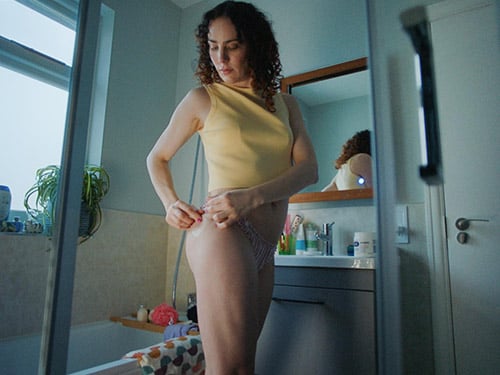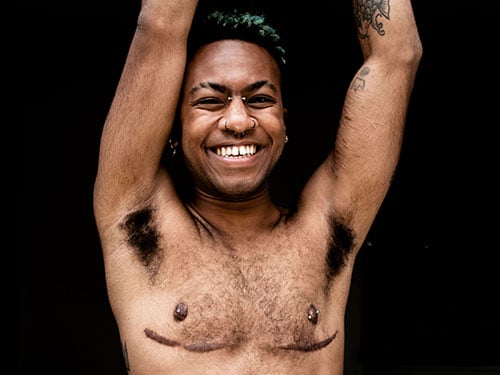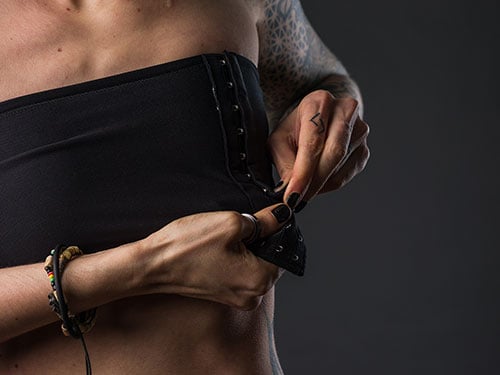Understanding skin changes from oestrogen and anti-androgen therapy
As part of a transition many transgender, transfeminine, transfemme, non-binary, and gender diverse people may be prescribed hormone therapy (HRT), to help align their physical appearance with their gender identity. The physical developments of this can cause unexpected changes to the body, including the skin.
We’ve funded research and worked with leading experts in transgender healthcare to create a guide on what skin conditions may be experienced during oestrogen and anti-androgen therapy.
This research dived into published studies of skin conditions that may occur during the transition journey. After screening over 500 research papers and following a robust quality assessment, this study evolved into a paper, which signposts to the most reported skin changes during different stages of transition. We appreciate this may mean that there are some limitations in the article including age and ethnic groups.
Transition journeys are very much an individual experience, and some symptoms may be experienced that don’t appear here, and some that are included in the article may not be experienced at all. These limitations are here due to the very limited research which has been done in this space to date. This is why we feel it is important to provide more resources and information for those who may need it.
What is oestrogen and anti-androgen hormone therapy (HRT)?
Oestrogen HRT can be used by trans+ people to develop mental, emotional, and physical changes in the body. These can include breast development, fat redistribution to the hips, reduction in muscle mass, as well body hair fining. Usually, oestrogen is administered through tablets, implants, or patches.
Those on a transition journey like this may also be prescribed anti-androgen medicine or testosterone blockers. These stop the biological effects that testosterone and dihydrotestosterone (DHT) have in the body.
Dry Skin (Xerosis) and Fragile Nails
What is dry skin?
Dry skin appears on the surface of the skin making it look rough, scaly, and flaky. Sometimes dry skin can also be itchy. The location where these dry patches form vary from person to person but most commonly, they can be found on the face, arms, and legs.
Alongside dry skin, fingernails and toenails may become more brittle.
What’s the connection between dry skin and oestrogen therapy?
An increase in oestrogen significantly reduces the body’s production of sebum (a natural oil) which can cause skin to become dryer and flakier. It’s also been known to change collagen production and skin thickness, further contributing to dryness.
Dry skin and weak nails can be managed through the introduction of a moisturiser into skincare routines, helping to reduce dryness and regulate oil in the skin. For advice on what skincare options may work during transition, we recommend getting in touch with a healthcare professional or dermatologist.
Eczema (Atopic dermatitis)
What is eczema?
Eczema, also known as atopic dermatitis, is a skin condition which appears on the surface as inflammation, itching, and redness. The condition can vary widely in severity, with symptoms ranging from mild discomfort to persistent itching.
What’s the connection between eczema and oestrogen therapy?
As with the development of dry skin, oestrogen therapy can impact the skin’s oil production and moisture levels, which can contribute to skin conditions like eczema. A medical study has shown that within a pool of transgender women and transfeminine people seeking help for skin concerns, 80% of those were diagnosed with eczema (Imhof et al., 2020)1 .
Every person’s experience with eczema is unique and can be triggered by other factors such as stress, diet, weather, and sensitivity to certain detergents. When experiencing eczema symptoms, the best first step would be to consult with a healthcare professional for personalised advice and treatment options.
To find out more about eczema, read our article here:
1. Imhof, R. L., Davidge-Pitts, C. J., Miest, R. Y. N., Nippoldt, T. B., & Tollefson, M. M. (2020). Dermatologic disorders in transgender patients: A retrospective cohort of 442 patients. Journal of the American Academy of Dermatology, 83(5), 1516–1518. https://doi.org/10.1016/j.jaad.2020.06.074
Hyperpigmentation (Melasma)
Hyperpigmentation occurs when the skin darkens in specific areas, like under the eyes and areas around the mouth. The darkening can be caused by a build-up of melanin (the pigment responsible for skin colouration) in isolated areas of the face.
What’s the connection between hyperpigmentation and oestrogen therapy?
Trans+ people may develop hyperpigmentation due to several factors related to their hormone replacement therapy (HRT).
Oestrogen can influence the frequency of melanin production, leading to changes in skin pigmentation. Some may experience increased melanin production particularly in areas exposed to sunlight.
Hyperpigmentation isn’t usually considered harmful, and, in some cases, areas will fade on their own. However, if this becomes more intense, there are treatment options.
It’s important to remember that hyperpigmentation can also be triggered by other factors, such as sun exposure, skin sensitivity, stress, surgical procedures, and genetic predisposition, so seeking support from a healthcare professional is always advised as a first step.
Razor bumps
Frequent shaving or trimming of facial hair can lead to razor bumps or pseudofolliculitis barbae (PFB). Razor bumps are most commonly found around the face, armpits, pubic area and legs and occur when curled hair grows back into the skin, causing red, itchy spot-like bumps on the surface of the skin. Post-inflammatory hyperpigmentation or keloid scarring may also appear (Ogunbiyi, 2019)2.
What can be done about razor bumps?
It’s always important to follow a safe and skin-protecting routine when shaving. This can include wetting the skin and hair to soften it before shaving, using shaving cream and rinsing the skin with cool water to reduce inflammation. Introducing a moisturiser into a skincare routine can also help with irritation between shaves.
Within more severe cases, there are prescription creams available. It’s always best to consult with a healthcare professional in the first instance, so they can assess the severity and provide personalised recommendations.
2. Ogunbiyi, A. (2019). Pseudofolliculitis barbae; current treatment options. Clinical, Cosmetic and Investigational Dermatology, 12, 241–247. https://doi.org/10.2147/CCID.S149250
Feeling comfortable in your skin:
When changes to the skin occur as part of hormone replacement therapy (HRT), it can be euphoric but also challenging and at times uncomfortable. By knowing what skin conditions to look out for and when to seek support, we hope to help bring comfort back to skin, as quickly as possible.
Understanding skin changes from…


Oestrogen and Anti-androgen therapy

Gender affirming surgery










